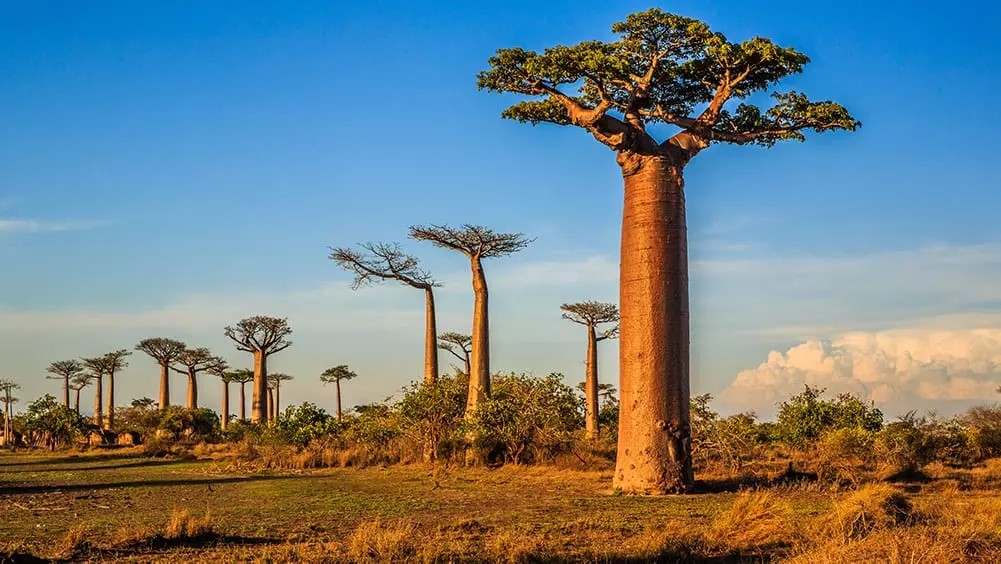Baobab Tree

- 17 May 2024
Why is it in the News?
A new study has uncovered the origins of baobabs, the tall and uniquely shaped deciduous trees that are famously spotted on the island of Madagascar.
What are Baobab Trees?
- Baobabs are known for their great heights, with some extending up to 50 metres, and exceptionally long lifespans going up to 2,000 years.
- In India too, a few baobab trees exist, including one near the Golconda Fort in Andhra Pradesh that is believed to be more than 400 years old.
- The trees have trunks with large circumferences and thin, spindly branches.
- In local cultures, the trees are also revered because of the multiple uses their parts have, with the fruits and seeds being edible, the seed oil used for cooking and the bark fibre for clothing.
- They are also called “upside down” trees because of their tops resembling an uprooted plant turned upside down.
Essential for the ecosystem:
- Baobab trees are fundamental to the entire dry African savanna ecosystem.
- They help keep soil conditions humid, aid nutrient recycling, and slow soil erosion with their massive root systems.
- As a succulent, the tree absorbs and stores water from the rainy season in its massive trunk, producing a nutrient-dense fruit in the dry season, which can grow up to a foot long.
- The fruit contains tartaric acid and Vitamin C, serving as a vital nutrient and food source for many species.
- They are also an essential source of water and shelter for hundreds of animals, including birds, lizards, monkeys, and even elephants – which can eat their bark for moisture when there is no water nearby.
In human culture:
- For humans, the baobab’s fruit pulp can be eaten, soaked in water to make a refreshing drink, preserved into a jam, or roasted and ground to make a coffee-like substance.
- The bark can be pounded to make everything from rope, mats, and baskets to paper and cloth.
- Leaves are also used, they can be boiled and eaten, or glue can be made from their flower’s pollen.
What Did the Study Find?
- The study highlighted the threats facing baobab trees and examined their genetic makeup.
- It reported that three Madagascar species of baobab trees are threatened with extinction, according to the IUCN Red List of Threatened Species.
- The study identified various threats, including residential and commercial development and livestock farming, which require land clearing.
- However, even species not currently endangered show declining populations, suggesting that more rigorous conservation strategies are needed to ensure their long-term survival.
- This necessitates a detailed understanding of the baobabs' genetics.
- Genomic sequencing revealed a consensus on the monophyly of the Malagasy lineage from Madagascar.
- According to DNA studies, baobab trees first arose in Madagascar 21 million years ago, with their seeds later carried by ocean currents to Australia and mainland Africa, where they evolved into distinct species.
- The study also warned that climate change poses severe threats to Adansonia suarezensis from Madagascar, predicting its possible extinction by 2080.
- Due to their unique ecological roles and low genetic diversity, these species are likely to have reduced resilience to environmental changes and habitat fragmentation.
